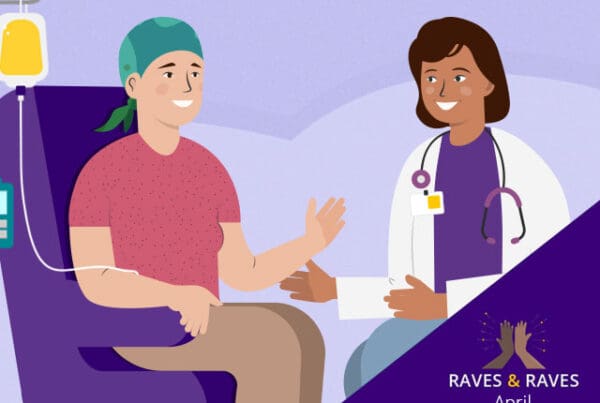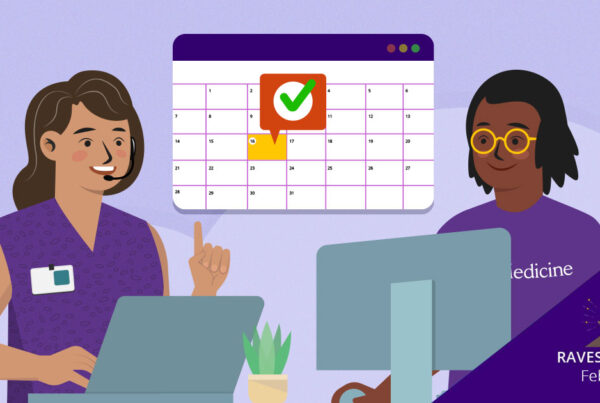Saturday, Sept. 11, marks 20 years since the terrorist attack on the World Trade Center’s Twin Towers, the Pentagon and the crash of United Airlines Flight 93 — a day we will never forget.
We’ve gone through stages of grief and resilience together as a nation, and so much has changed because of that day.
As the 20th anniversary approaches, we come together to remember the nearly 3,000 people who died and the countless first responders, service members and individuals who showed up to help in whatever ways they could.
Most of us remember where we were and how we felt when we heard the news.
“I was on the bus coming into work at Harborview,” says Susan Gregg, media relations director. “Someone said, ‘New York has been hit,’ and we were all trying to figure out what was going on. Some people had their phones and everyone on the bus was trying to gather information. It was so surreal. We were all in shock. Looking back, there was some comfort in being on the bus and experiencing the moment with other people.”
The events of 9/11, where we were and what we experienced are part of our nation’s collective story. In commemoration of the 20th anniversary, Rev. Debra Jarvis, Benjamin Starnes, MD, FACS, and Wesley Van Voorhis, MD, PhD, share their memories of being on the ground in Washington, D.C. and New York City.
Called to the Pentagon
“I was seeing vascular patients at the clinic the morning of Sept. 11. I had about 70 patients to see when an intern ran up and said a plane hit the towers in New York City,” says Benjamin Starnes, MD, FACS, chief of vascular surgery at Harborview Medical Center and professor and chief of the Division of Vascular Surgery at UW School of Medicine. “I said to the intern, ‘Listen, we have a busy clinic, and we can’t be busy with current events too.’ Not long after that a second plane hit the second tower. That’s when I knew we were under attack.”
Starnes was in his second year of fellowship training in vascular surgery at Walter Reed National Military Medical Center, seven miles away from the impact at the Pentagon. He was also one of the few surgeons at Walter Reed at that time with combat experience.
“Lieutenant Colonel Jim Goff, the assistant chief of surgery, came up to me and said, ‘There is a plane that just hit the Pentagon and I need you to go and lead a surgical team to triage patients,’” says Starnes.
Starnes was promptly put on a bus headed to the Pentagon with an orthopedic surgeon, pathologist, pharmacist, anesthesiologist and infectious diseases specialist. A major at the time, Starnes went up to the highest ranking official, Colonel Fred Oster, chief of infectious diseases, and said, “Sir, do you have experience with triage? I do, would you like me to take over?” And he said, “Please do.”
“I asked everyone to take a few minutes and a few deep breaths and to reflect on why we were here and the training that led them to this point,” says Starnes.
Starnes and team identified who would take on patients via the Department of Defense’s DIME (Delayed, Immediate, Minimal and Expectant) triage system once they got there.
Those in the expectant (expected to die despite treatment) category would be taken care of by the pathologist and pharmacist, those in the minimal (sustained minimal injuries) and delayed (life-threatening but potentially treatable injuries that can be delayed) categories would be seen by the orthopedic surgeon, and those within the immediate (needing immediate medical attention) category for airway problems or hemorrhage control were to be evacuated.
As the bus approached the Pentagon, Starnes recalls the blocks leading up to it as “absolute chaos.” People dressed in suits were sitting on their briefcases with their head in their hands weeping, traffic was completely gridlocked and there was a constant whir of sirens, he says.
“It was a gorgeous day, and it was disheartening to look up and see the Pentagon on fire and engulfed in this big plume of smoke,” says Starnes. “When we got off the bus there was an intense heat, the smell of jet fuel and burnt rubber — it was absolute destruction.”
As he stepped off the bus, he says there were people everywhere. A firefighter who had survived and witnessed the blast had his uniform buckles burned into his back. Starnes and his team set up their stations, but soon after they got word that there was another missing plane — and that it was bound for the Pentagon.
“People started to run in different directions,” says Starnes. “I made a plan in my head, if it comes from this way I’ll run there — we were trying to treat patients and plan for another plane to hit.”
Of course, the missing plane, United Airlines Flight 93, did not hit the Pentagon or the White House as it was commandeered back from the hijackers by the passengers and crew members, eventually crashing into a field in Pennsylvania.
“The rest of the day we treated patients and ran recovery operations. There were 22,000 people in the Pentagon when the plane hit the building and 189 people died, 64 of which were on board the flight,” says Starnes. “It’s remarkable we didn’t lose more lives.”
The following week after 9/11 Starnes was in Manhattan with his father, who was supposed to undergo treatment for esophageal cancer at Memorial Sloan Kettering Cancer Center.
“With my army uniform and rank I was able to go to Ground Zero. I’ll never forget the sights, smells and sounds of both sites,” says Starnes. “They are still seared into my memory 20 years later.”
To learn more about Starnes’ experience at the Pentagon, read “American Phoenix: Heroes of the Pentagon on 9/11,” a book written by Starnes’ brother and contributed to by Starnes; or, listen to a discussion hosted by the National Archives Foundation.
A blood bank brings strangers together
Wesley Van Voorhis, MD, PhD, a physician at UW Medical Center – Montlake’s Infectious Diseases & Tropical Medicine Clinic and director of the Center for Emerging and Re-emerging Infectious Diseases, and his wife Rev. Debra Jarvis, chaplain at UW Medical Center — Montlake, were visiting friends in New York after Van Voorhis attended a parasitology conference in Massachusetts.
“We got up on Sept. 11 and could see smoke to the south. Our friends, who were at work, called us and said, ‘Turn on the TV,’” says Van Voorhis. “We turned on the TV to see that the first plane had hit the first tower. We were about 100 blocks north. Then we saw the next jet hit the tower on television and we realized we were under attack.”
Jarvis and Van Voorhis, stunned by what they had seen, watched the TV for a bit longer and decided they needed to go and see if they could help. They walked south toward the New York Blood Center.
“As we walked south there were no cars anywhere — it was strange for a vibrant place like New York City,” says Van Voorhis. “We started to see people walking north and they had ash in their hair — it looked like a war zone, almost zombie like.”
The blood bank was packed. Van Voorhis and Jarvis were among many New Yorkers and tourists who had the same idea and wanted to do something — anything — to help. The blood bank was looking for people to draw blood, so Van Voorhis and Jarvis (a former phlebotomist) raised their hands to volunteer.
“We spent the rest of the day drawing blood. It was an amazing experience. People from all over the world who had come to visit New York City were lined up to help,” says Van Voorhis. “Everyone just wanted to do something to help even though there was relatively little one could do besides donate blood. We needed a therapeutic blood draw and we needed to show that we cared.”
The days following 9/11, New York was shut down. Jarvis and Van Voorhis were locked down in the city.
“I spent some time wandering around Manhattan. They weren’t allowing any cars or vehicles and you would walk around Central Park and it was incredibly quiet,” says Van Voorhis. “Once in a while a military jet would fly over New York and everyone felt like we were under attack again. It was an eerie feeling. We were all worried there would be more attacks.”
Jarvis went to volunteer at the Armory as a chaplain. The Armory was where families went to file a missing person report and check the list of the dead.
Jarvis and the other volunteers were told not to ask first responders about their feelings as they needed rescue personnel to remain professional.
“I spent most of my time talking with cops, who weren’t at that moment talking to families, and what we talked about most was baseball,” says Jarvis.
Capitalizing on the Mariners vs Yankees rivalry, she cracked jokes with first responders and used laughter as a breath of fresh air in the cloud of smoke and insurmountable loss that covered the city.
“You could tell when someone was running out of air, meaning just getting so emotionally overwhelmed and desperate. So you’d make a face and say something funny,” says Jarvis.
And she says it’s been a similar experience working with front-line hospital workers throughout the COVID-19 pandemic.
“I’ve spent lots of time doing deep listening with overwhelmed staff, but sometimes my intuition said, ‘Humor is needed here,’” she says. “I even did a ridiculous hand-gel macarena routine with a nurse who needed a moment of lightness. It’s the same reason I started the cartoon board outside the Spiritual Care office.”
Van Voorhis also sees overlap between 9/11 and the pandemic in how we have shown up for one another.
“What we can learn from 9/11 is keeping up the momentum of caring for each other, and right now that involves getting vaccinated and masking up,” says Van Voorhis. “It’s these moments that teach us how much we care.”
To learn more about Jarvis and Van Voorhis’ experience on 9/11, read “I’d Rather Be Here Now.”
Support and resources
- Find support services for veterans and more in the latest well-being and support message.
- Plus more resources for employee mental health support.
Photo by Jericho Cervantes on Unsplash.


